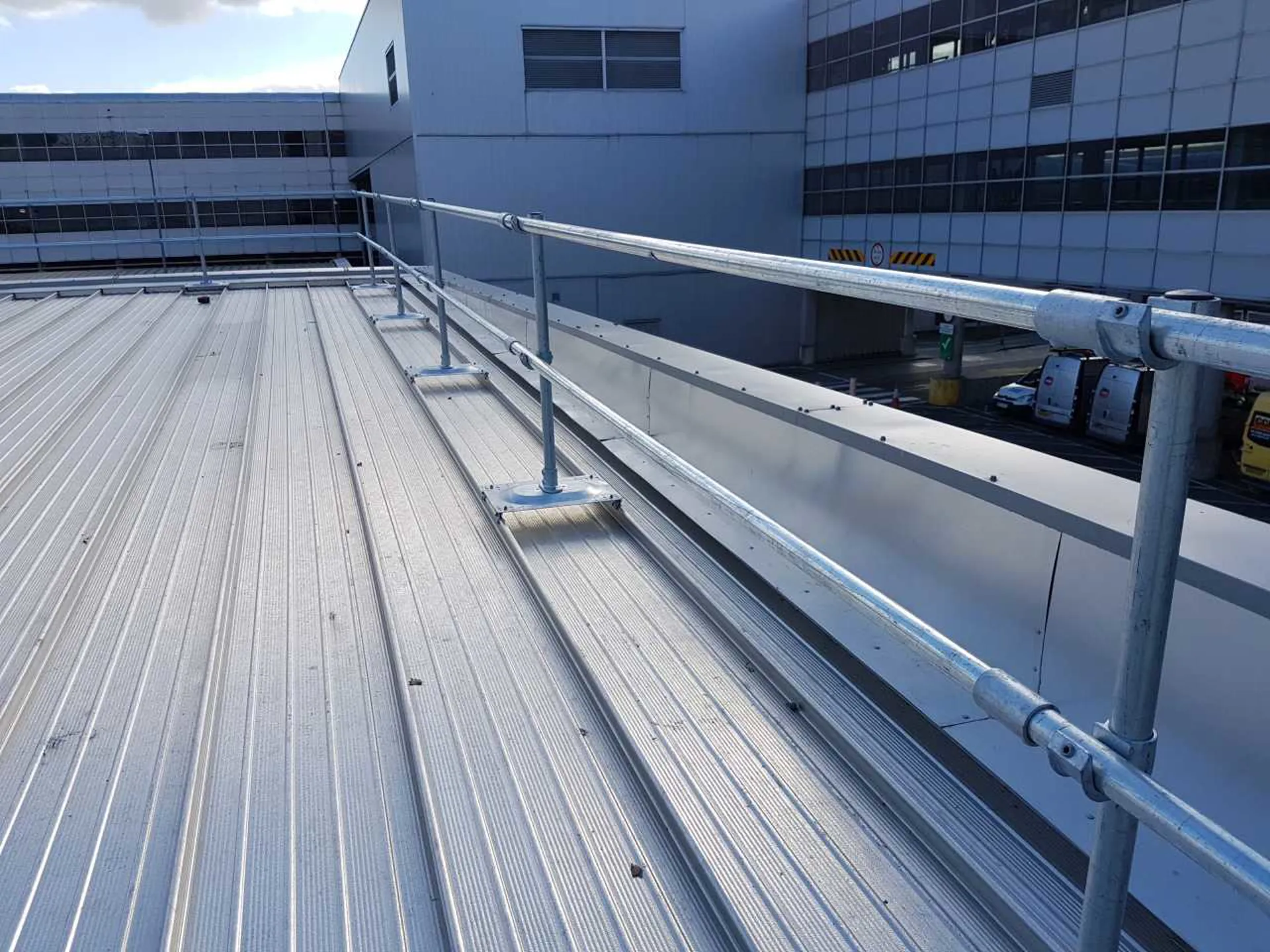
The best practices for all height-related workplaces include the deployment of a comprehensive fall protection systems. The eradication of the hazard itself takes precedence over all other approaches in the fall safety hierarchy. If this is not achievable, the next step is to secure the site parameters by installing Passive Fall Protection Systems, followed by an Active Fall Arrest System as a last resort.

A dedicated roof hatch safety access and railing system, ensuring secure egress/ingress with added protection during hatch use.
Kee Hatch
Enhance rooftop safety on flat roofs with a non-penetrating, modular, free-standing railing system that effectively restricts access to the roof's leading edge.
KeeGuard
Safeguard against OSHA safety hazards by securely attaching the Kee Skylight Screen without roof penetration, preserving both the roof's integrity and the skylight.
Kee Cover
Custom-designed SAPs offer secure rooftop access over obstacles such as piping, ventilation systems, and level changes, ensuring safety.
Kee Work Platforms
A passive fall protection system is a non-dynamic, stationary device that does not move, adapt, or alter while in or out of use. Passive systems do not necessitate the use of personal protection equipment or active worker engagement. Netting, handrails, and guardrails are common components of passive systems. Passive solutions are particularly suited in architectural designs and working situations where technical controls cannot alleviate fall hazards.
A good example of a passive fall protection system is Kee Guard Safety Guardrail.

Active fall protection systems, as opposed to passive systems, are dynamic and need the employment of specialized equipment as well as worker engagement. Active fall protection systems are classified into two types: fall restraint systems and fall arrest systems. A lanyard is used to secure a harnessed worker to an anchoring point in all active fall protection systems. A fixed-length lanyard is commonly used in fall restraint systems such as a horizontal lifeline, to restrict a worker's center of gravity from crossing over a fall hazard's leading edge. Fall arrest systems use a variety of lanyards, including rip stitch lanyards and SRLs, to keep a free-falling worker from hitting a lower level. Active fall protection systems are sometimes known as Personal Fall Arrest Systems.
A good example of a fall arrest system is Kee Anchor

There are many considerations to take into account when choosing which type of Fall Protection Systems meets your needs. This includes meeting the OSHA requirements for fall protection. Kee Safety provides a wide range of specialized solutions for both active and passive fall protection that meets or exceeds OSHA standards. To get a quote or to find out more information on our products, please contact us by filling out the form below.
Why Choose Kee Safety for Fall Protection Systems?
At Kee Safety, we've been at the forefront of fall protection systems for years. Our dedication to safety, innovative solutions, and unmatched expertise make us the partner of choice for those seeking top-tier fall protection systems. Whether you're in the construction industry, maintenance, or any field that involves working at heights, our tailored solutions ensure that you meet safety standards and provide a secure environment for your team.
Remember, your workers are your most valuable asset, and investing in their safety is your greatest responsibility. Join us in prioritizing safety and discover the Kee Safety advantage.

Please fill in your details below and we’ll be in touch shortly.